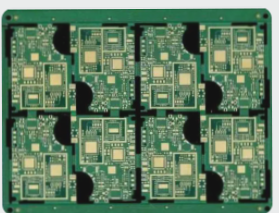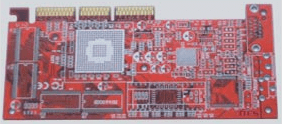Reducing Rework for Improved PCB Reliability
When it comes to soldering temperatures for PCB assembly, different methods require specific temperature ranges. For example, wave soldering typically operates at 240-260°C, vapor phase soldering at around 215°C, and reflow soldering at approximately 230°C. It’s crucial to note that the rework temperature should not surpass the reflow temperature. While these temperatures may seem close, they should never be identical. Rework processes target localized components, unlike reflow processes that heat the entire PCB assembly, whether through wave soldering, IR, or vapor phase soldering.
The industry standard also plays a role in limiting the reduction of reflow temperature during rework. Nearby components should not exceed 170°C during repair, aligning the reflow temperature during rework with the PCB assembly size and the components being reworked. Rework focusing on a portion of the PCB imposes restrictions on the repair temperature of the entire board. Localized heating during rework needs to be higher than the typical production temperature to offset the heat absorbed by the entire assembly.
There is ongoing debate on why the rework temperature of the entire board cannot exceed the reflow soldering temperature used in production. Aligning these temperatures could bring them closer to the recommended levels by semiconductor manufacturers.
Preheating Methods for PCB Components

1. Preheating Methods for PCB Components
Modern preheating methods for PCB components fall into three main categories: oven, hot plate, and hot air slot. Using an oven to preheat the substrate before rework and reflow soldering aids in component disassembly. Ovens also help remove internal moisture from integrated circuits, preventing micro-cracking known as “popcorn.” The baking process in an oven is lengthier, lasting around 8 hours.
One drawback of ovens is their inability to preheat and repair PCBs simultaneously, unlike hot plates and hot air slots. Ovens also do not facilitate rapid cooling of solder joints post-reflow.
2. Hot Plate for PCB Preheating
Hot plates are less effective for preheating PCBs due to the prevalence of components on both sides of the substrate. Heating uneven surfaces uniformly with a hot plate is challenging. After achieving reflow, hot plates continue to emit heat, slowing the cooling process and hindering solder joint solidification, potentially weakening joint strength.
3. Hot Air Slot for PCB Preheating
Hot air slots offer the advantage of direct and quick airflow into all corners and crevices of the PCB assembly, ensuring uniform heating and reducing overall heating time.
4. Secondary Cooling of Solder Joints in PCB Components
In SMT rework of PCBA (printed circuit board assembly), replicating the production process is crucial. Preheating PCB components before reflow is essential, as is rapid cooling post-reflow. Both steps are vital for through-hole technology and sensitive components with micro-welding.
Benefits of Secondary Cooling in PCB Assembly
In standard reflow equipment like chain furnaces, PCB components move to the cooling zone right after the reflow zone. Adequate ventilation in the cooling zone is crucial for rapid cooling. Rework operations are commonly integrated into the production equipment.
Importance of Rapid Cooling
After reflow, slowing down the cooling process can lead to the formation of lead-rich liquid pools in the solder, weakening the solder joints. Rapid cooling prevents lead precipitation, enhances grain structure, and strengthens solder joints. It also minimizes quality issues from accidental component movement during reflow.
Enhancing Quality with Secondary Cooling
Secondary cooling during preheating and reflow offers various benefits. It helps reduce misalignment and tombstone effects in small SMD components, improving overall quality. Technicians can utilize the preheating time to prepare materials like solder paste and flux efficiently.
Cost Savings and Waste Reduction
Addressing process issues in reworked PCB assemblies before circuit testing can save significant time and costs by avoiding unnecessary scrapping. Proper preheating and secondary cooling minimize substrate delamination, spotting, bubbling, warping, and other issues, reducing waste and enhancing efficiency.
Optimizing PCB Rework Processes
Implementing proper preheating and secondary cooling is vital for reworking PCB components effectively. These simple yet essential processes ensure the integrity and durability of solder joints, ultimately improving the overall quality of PCB assemblies.
- If you require PCB manufacturing services, feel free to contact us.


